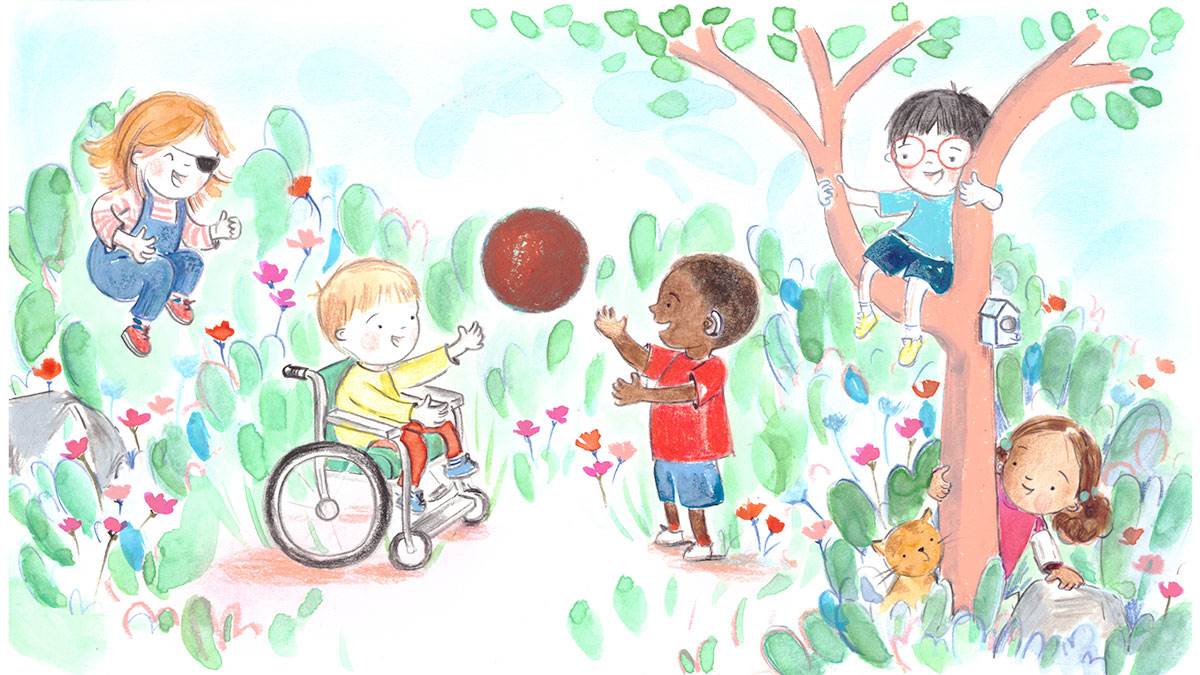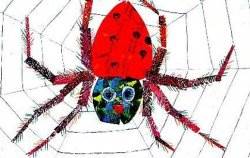Why tactile books make sense
Published on: 31 Mai 2011 Author: Alex Strick
Alex Strick, BookTrust's disability consultant, discusses tactile, interactive and touch & feel books and how they can help children with various disabilities.

My 15-month-old daughter is currently obsessed with books which have textures and sounds. In the midsts of trying to cook dinner, I inevitably have to pause every few minutes to acknowledge the latest object of her fascination - be it a tiger's furry tummy, a butterfly's shiny wings or a button that makes a rather rude noise.
She'll thrust the book at me and watch, intrigued to see my reaction to her discovery. We'll then enter into a discussion about the relevant texture or sound and what it reminds us of.
Often, we end up sitting on the kitchen floor together, completely immersed in the book, while the dinner is left to slowly blacken on the stove.
There is no doubt, multisensory books offer something rather special. None less so, of course, than for blind or partially sighted children. For these children, the noisy and tactile elements are of course crucial in involving them and enabling them to connect with the story. The very best multisensory book will mean that they can touch, stroke, push, pull, lift, shake, turn, rattle and perhaps even scratch and sniff their way along with the story.

This month saw Living Paintings win the Nasen Award for the best Inclusive Resource to Support Early Development for their Fun with Spot pack, which includes an audio version alongside a wonderful range of tactile images.
For any publisher planning a book with sensory or interactive elements, bearing in mind just a few basic guidelines will transform a book, making it suddenly so much more relevant and appealing to the widest possible audience.
Such books have so much to offer children with additional needs - not just visually impaired children - but also children who are deaf, have learning difficulties, complex needs or difficulties with attention and concentration.
In terms of touch and feel elements, the books that offer the most are those which feature recognisable shapes and textures. A patch of fur is great, but a patch of fur which is shaped like the lion's mane in the story is so much more meaningful. A crinkly, rustling leaf shape tells a child far more than a blob of felt in the shape of a rather abstract tree.
Books will ideally offer a range of different textures and shapes - although not all on the same page! One clearly recognisable object per page is far more valuable than many confusing elements. Overlapping shapes can also be confusing, especially if the two items are of a similar texture and size. Likewise, a sighted child can soon learn that an object that is further away will be smaller than one in the foreground, but for a visually impaired child, it will not be clear why two objects in a scene are different sizes. Perspective is a tough concept to grasp at the best of times.
Raised images (or thermoforms) can offer a great way to bring an image to life, provided they are kept fairly simply for fingers to follow. Trying to raise too many bits of a regular picture can be confusing, whereas focusing on just one element (such as the wonderful silky web in Eric Carle's classic The Very Busy Spider) allows the child to really explore and understand the chosen object.
In terms of noisy elements and items to move, buttons and tabs need to be easy to find on the page and the sound effects clearly recognisable and relevant to the text. Likewise, scented elements of a book can add so much more if they are fully relevant to the story. Some of the best books I have seen recently manage to combine different sensory elements, creating a true multisensory feast for any child.
Books with multisensory elements have the amazing potential to appeal to every young child - and often with just a bit of thought or a minor adjustment, they will.
Publishers may also want to look at the excellent guidelines produced by the Tactile Book Advancement Group.
Topics: 0-1 year, 2-3 years, Interactive, Bookmark, Disability, Early learning, Features





